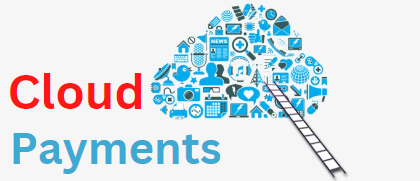How to Integrate Cloud Payments with Your Existing Systems
In today’s digital age, businesses are constantly seeking ways to streamline their operations and improve efficiency. One area that has seen significant advancements is payment processing. Traditional payment methods, such as cash or checks, are being replaced by digital payment solutions. Among these solutions, cloud payments have emerged as a game-changer for businesses of all sizes.
Cloud payments refer to the process of using cloud-based platforms to handle payment transactions. This integration allows businesses to accept payments from various channels, such as online, mobile, or in-store, and seamlessly integrate them with their existing systems. The importance of cloud payments integration cannot be overstated, as it offers numerous benefits and opens up new opportunities for businesses.
Benefits of Integrating Cloud Payments with Your Existing Systems
- Enhanced Flexibility and Scalability: Cloud payments integration provides businesses with the flexibility to adapt to changing customer demands and market trends. It allows for easy scalability, enabling businesses to handle increased transaction volumes without the need for additional infrastructure.
- Improved Customer Experience: Cloud payments integration enables businesses to offer a seamless and convenient payment experience to their customers. With the ability to accept payments from various channels, customers can choose their preferred method, leading to increased customer satisfaction and loyalty.
- Real-time Data and Analytics: By integrating cloud payments with existing systems, businesses gain access to real-time data and analytics. This data can be used to gain valuable insights into customer behavior, preferences, and trends, allowing businesses to make informed decisions and optimize their operations.
- Cost Savings: Cloud payments integration eliminates the need for costly hardware and software installations. Businesses can leverage the infrastructure provided by the cloud payment provider, reducing upfront costs and ongoing maintenance expenses.
- Increased Security: Cloud payment providers invest heavily in security measures to protect sensitive customer data. By integrating with a reputable cloud payment provider, businesses can ensure the security and integrity of their payment transactions.
Assessing Your Current Systems: Preparing for Integration
Before integrating cloud payments with your existing systems, it is essential to assess your current infrastructure and processes. This assessment will help identify any gaps or areas that need improvement to ensure a smooth integration process.
- Evaluate Existing Payment Systems: Start by evaluating your current payment systems, including hardware, software, and payment gateways. Identify any limitations or inefficiencies that need to be addressed during the integration process.
- Understand Data Flow: Gain a clear understanding of how payment data flows within your existing systems. Identify the touchpoints where payment data is captured, processed, and stored. This understanding will help determine how the integration should be implemented.
- Identify Integration Requirements: Determine the specific requirements for integrating cloud payments with your existing systems. Consider factors such as payment channels, currencies, languages, and any regulatory or compliance requirements.
- Assess IT Infrastructure: Evaluate your IT infrastructure to ensure it can support the integration. Consider factors such as bandwidth, storage capacity, and network security. If necessary, make any necessary upgrades or enhancements to ensure a seamless integration process.
Choosing the Right Cloud Payment Provider: Factors to Consider
Selecting the right cloud payment provider is crucial for a successful integration. Consider the following factors when choosing a provider:
- Security and Compliance: Ensure that the cloud payment provider adheres to industry-standard security protocols and compliance regulations, such as PCI DSS (Payment Card Industry Data Security Standard).
- Integration Capabilities: Assess the provider’s integration capabilities and compatibility with your existing systems. Look for providers that offer robust APIs (Application Programming Interfaces) and support for various payment methods and channels.
- Pricing and Fees: Evaluate the pricing structure and fees associated with the cloud payment provider. Consider factors such as transaction fees, monthly subscriptions, and any additional charges for value-added services.
- Reputation and Reliability: Research the provider’s reputation and reliability in the industry. Look for customer reviews, testimonials, and case studies to gauge their track record and customer satisfaction levels.
Step-by-Step Guide: Integrating Cloud Payments with Your Existing Systems
Now that you have assessed your current systems and chosen a cloud payment provider, it’s time to proceed with the integration process. Follow these steps to ensure a successful integration:
- Define Integration Objectives: Clearly define your integration objectives, such as streamlining payment processes, improving customer experience, or gaining real-time data insights. This will serve as a roadmap for the integration process.
- Develop a Project Plan: Create a detailed project plan that outlines the tasks, timelines, and resources required for the integration. Assign responsibilities to team members and establish clear communication channels.
- Configure Payment Gateway: Set up the payment gateway provided by the cloud payment provider. Configure the necessary settings, such as payment methods, currencies, and transaction rules.
- Integrate APIs: Utilize the APIs provided by the cloud payment provider to integrate payment functionality into your existing systems. This may involve custom development or utilizing pre-built integrations, depending on your specific requirements.
- Test and Validate: Conduct thorough testing to ensure the integration is functioning as expected. Test various payment scenarios, including different payment methods, currencies, and error handling. Validate the accuracy of transaction data and ensure it is properly recorded in your systems.
- Train Employees: Provide training to employees who will be involved in payment processing and reconciliation. Ensure they understand the new processes and are familiar with the features and functionalities of the integrated system.
- Monitor and Optimize: Continuously monitor the integration to identify any issues or areas for improvement. Leverage the real-time data and analytics provided by the cloud payment provider to optimize payment processes and enhance customer experience.
Common Challenges and Solutions in Cloud Payments Integration
While integrating cloud payments with existing systems offers numerous benefits, it can also present challenges. Here are some common challenges and their solutions:
- Legacy System Compatibility: Legacy systems may not have the necessary capabilities or APIs to integrate with cloud payment providers. In such cases, consider utilizing middleware or third-party integration tools to bridge the gap.
- Data Synchronization: Ensuring accurate and real-time data synchronization between the cloud payment provider and existing systems can be challenging. Implement data validation and reconciliation processes to address any discrepancies.
- Compliance and Security: Integrating cloud payments requires adherence to various compliance regulations, such as PCI DSS. Work closely with the cloud payment provider to ensure compliance and implement robust security measures.
Enhancing Security and Compliance in Cloud Payments Integration
Security and compliance are paramount when integrating cloud payments with existing systems. Follow these best practices to enhance security and compliance:
- Encryption: Implement end-to-end encryption to protect sensitive payment data during transmission and storage. Utilize industry-standard encryption algorithms and protocols.
- Tokenization: Utilize tokenization techniques to replace sensitive payment data with unique tokens. This minimizes the risk of data breaches and ensures compliance with data protection regulations.
- Access Controls: Implement strict access controls to limit access to payment data. Utilize role-based access controls and multi-factor authentication to ensure only authorized personnel can access sensitive information.
- Regular Audits and Assessments: Conduct regular audits and assessments to identify any security vulnerabilities or compliance gaps. Engage third-party auditors to perform independent assessments and ensure adherence to industry standards.
Maximizing Efficiency and Streamlining Processes with Cloud Payments
Integrating cloud payments with existing systems offers opportunities to maximize efficiency and streamline processes. Consider the following strategies to leverage the full potential of cloud payments integration:
- Automated Reconciliation: Implement automated reconciliation processes to match payment transactions with corresponding invoices or orders. This reduces manual effort and minimizes errors.
- Real-time Reporting and Analytics: Leverage the real-time data and analytics provided by the cloud payment provider to gain insights into payment trends, customer behavior, and revenue patterns. Utilize this information to make data-driven decisions and optimize business processes.
- Omnichannel Payment Acceptance: Expand your payment acceptance capabilities to include various channels, such as online, mobile, and in-store. This allows customers to choose their preferred payment method, leading to increased sales and customer satisfaction.
- Subscription and Recurring Payments: If applicable to your business model, offer subscription or recurring payment options. This provides convenience to customers and ensures a steady revenue stream.
Frequently Asked Questions (FAQs) about Cloud Payments Integration
Q.1: What is cloud payments integration?
Answer: Cloud payments integration refers to the process of integrating cloud-based payment platforms with existing systems to enable seamless payment transactions and data synchronization.
Q.2: What are the benefits of integrating cloud payments with existing systems?
Answer: Integrating cloud payments offers benefits such as enhanced flexibility, improved customer experience, real-time data insights, cost savings, and increased security.
Q.3: How do I choose the right cloud payment provider?
Answer: When choosing a cloud payment provider, consider factors such as security and compliance, integration capabilities, pricing and fees, and reputation and reliability.
Q.4: What steps are involved in integrating cloud payments with existing systems?
Answer: The integration process involves defining integration objectives, developing a project plan, configuring the payment gateway, integrating APIs, testing and validation, employee training, and continuous monitoring and optimization.
Conclusion
Integrating cloud payments with existing systems is a crucial step for businesses looking to embrace the future of payments. The benefits of cloud payments integration, such as enhanced flexibility, improved customer experience, and real-time data insights, cannot be ignored. By assessing your current systems, choosing the right cloud payment provider, and following a step-by-step integration process, businesses can streamline their operations, maximize efficiency, and stay ahead in today’s competitive landscape.
As technology continues to evolve, cloud payments integration will become increasingly important for businesses of all sizes. By embracing this future of payments, businesses can unlock new opportunities, improve customer satisfaction, and drive growth in the digital era. So, take the leap and integrate cloud payments with your existing systems to stay ahead of the curve and thrive in the ever-changing business landscape.











